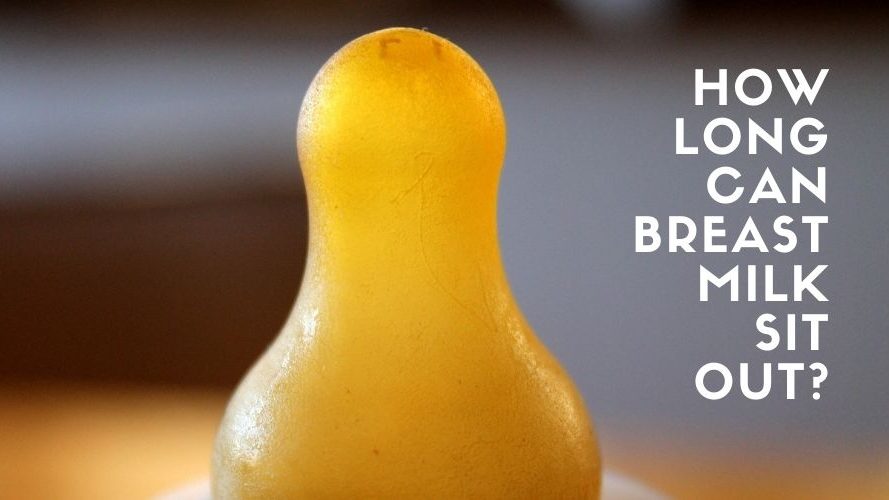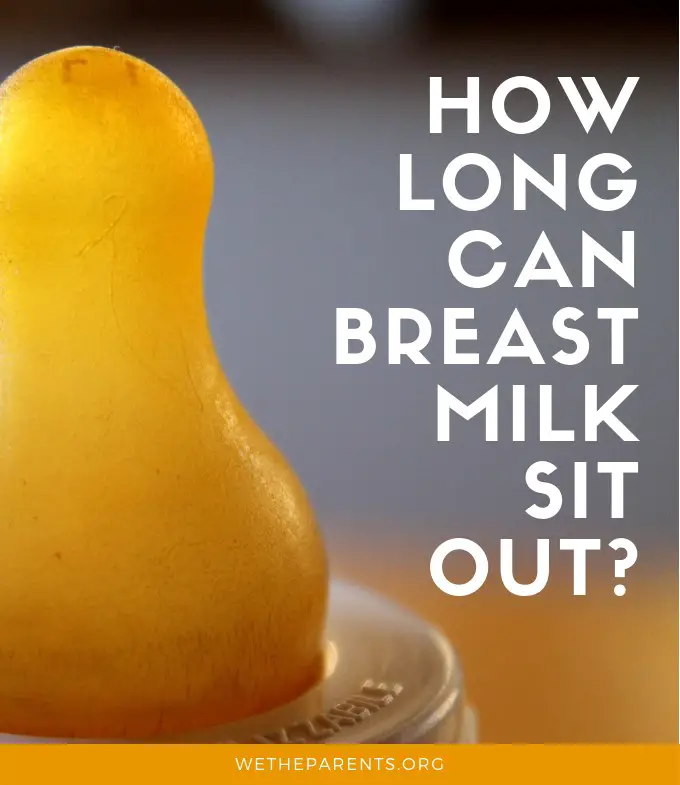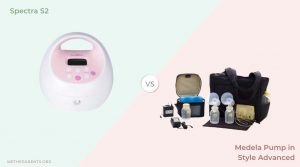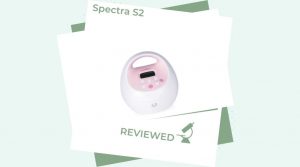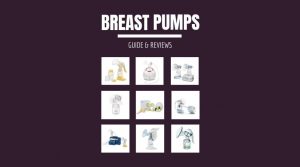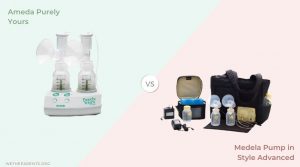How long is too long to keep breast milk sitting out?
If you’re a breastfeeding mom, chances are you made that decision, in part, because of the increased health benefits for your baby. Did you know that properly storing freshly expressed breast milk at room temperature is incredibly important to the continued health of your baby?
The last thing you want to do is waste even a drop of breast milk. There’s a reason it’s been dubbed “liquid gold.” In your effort to not waste your breast milk you shouldn’t have to worry about whether you are sacrificing their safety. That’s why it’s important to know how long is too long to let breast milk sit out.
Following a few guidelines for freshly expressed breast milk can build your confidence that the milk you are offering to your child is safe and sound.
Here’s what you need to know about leaving breast milk sitting out.
In this article:
Safely storing breast milk
Below are the general guidelines for how long breast milk can be stored at room temperature.
Room temperature
Freshly expressed breast milk can sit in a clean, sealed container for up to 6 hours (although 3-4 hours is considered optimal).
If your breast milk is sitting in a room that is unusually warm (above 79 degrees), you should refrigerate your milk after 3-4 hours for optimal safety.
If you are uncertain as to how long your breast milk has been sitting out, it’s better to be safe and dispose of it. This can prove to be a difficult decision. Having worked hard to pump that milk, it’s still not worth risking the health of your baby.1https://www.llli.org/breastfeeding-info/storingmilk/
Insulated cooler
Freshly expressed breast milk can be placed in an insulated cooler with ice packs. If kept below 59 degrees, the breast milk will remain safe for up to 24 hours. This insulated cooler allows you to keep the milk fresh for a later feeding in the day or until you can place the milk in refrigerated/frozen storage.2Breastmilk Storage & Handling
kellymom.com/bf/pumpingmoms/milkstorage/milkstorage/
It is important to note that the guidelines mentioned above are to be applied for feeding full-term, healthy babies. A small amount of bacterial growth happens as the breast milk sits at room temperature. This is normal and the milk remains completely safe for a healthy, full-term baby. If, however, you are feeding a premature infant or a baby with health issues, these guidelines change.
Premature infants and sick babies have a compromised immune system. Freshly expressed breast milk, therefore, should be used within one hour or refrigerated, so bacteria does not have a chance to form.3Storing Human Milk
llli.org/breastfeeding-info/storingmilk/
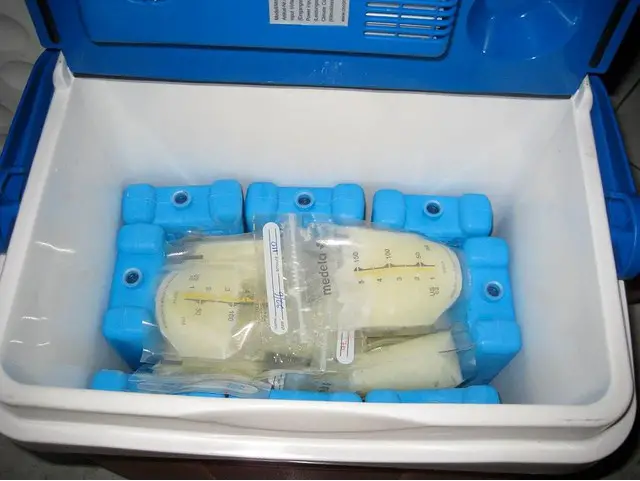
What is the danger in using breast milk that sits out longer than the advised time?
Two words: Increased bacteria.
Bacteria is present everywhere. There are bacteria on the skin of your breasts or on parts of your breast pump. The reality is that some of that bacteria will manage to get into your breast milk.
If you are diligent about hygiene and keep yourself and your breast pump clean, this small amount of bacteria is normal and will not harm your child.
So don’t worry!
Breast milk is a natural bacteria fighter and is full of antibacterial properties that help keep bacteria at bay. However, the longer breast milk stays at room temperature, the longer bacteria has the opportunity to multiply. Eventually, after around 6 hours at room temperature, the bacteria will increase to levels that are no longer safe for your baby.4Vohr, B. R., Poindexter, B. B., Dusick, A. M., McKinley, L. T., Higgins, R. D., Langer, J. C., & Poole, W. K. (2007). Persistent beneficial effects of breast milk ingested in the neonatal intensive care unit on outcomes of extremely low birth weight infants at 30 months of age.Pediatrics, 120(4), e953-e959.
healthline.com
How should I store freshly expressed breast milk that is sitting out?
If you plan to keep freshly expressed breast milk out at room temperature, proper storage is important. The right container can slow down the bacterial growth and allow your breast milk to stay safe for baby for longer.
- Bottles — Breast milk can be placed in bottles made of glass or hard plastic. Make sure the bottles are clean and able to be capped with an air-tight lid.
- Storage bags — You can also safely store your breast milk in plastic bags specially designed for milk storage. Standard household plastic bags should not be used for storing breast milk.5Cheng, E. R., Park, H., Wisk, L. E., Mandell, K. C., Wakeel, F., Litzelman, K., … & Witt, W. P. (2016). Examining the link between women’s exposure to stressful life events prior to conception and infant and toddler health: the role of birth weight.J Epidemiol Community Health, 70(3), 245-252. 6mayoclinic.org
Can refrigerated or frozen breastmilk sit out at room temperature to thaw?
The short answer is “no.”
It’s a lifesaver that breast milk can keep so well in the refrigerator and freezer. Either way, once breast milk has been chilled, you should never allow it to warm up (or thaw) by sitting out at room temperature.
Following standard guidelines for warming a bottle of breast milk is necessary to ensure the safety of the milk. Frozen milk should be thawed in the refrigerator or under cool, running water. Thawed milk should then be transferred to a bottle which can be placed in a bottle warmer or in a bowl of warm water. You should NEVER heat breast milk on the stove top or warm breast milk in the microwave.
Editor’s Note: Thawed milk that your baby did not finish can remain out for 1-2 hours but should be discarded if not used after this point. Refreezing unused milk is not advisable as this can further break down nutrients or increase the risk of bacterial contamination.
Ideally, you would refrigerate or freeze freshly expressed breast milk immediately but, if not possible, storing your breast milk at room temperature can be a safe and convenient option for you.
Proper handling of freshly expressed breast milk allows your baby to reap the continued benefits of breast milk without sacrificing the health of your child. By following a few simple guidelines, you can rest easy about the safety of expressed breast milk, while keeping the health of your child at the forefront.
Life is busy. Parenting keeps you on your toes and plenty of motherhood questions keep you awake at night. But how long is too long to keep breast milk sitting out doesn’t have to be one of them.
[Photo Credits: All photos used which are hosted on Flickr are licensed under the Creative Commons.]


